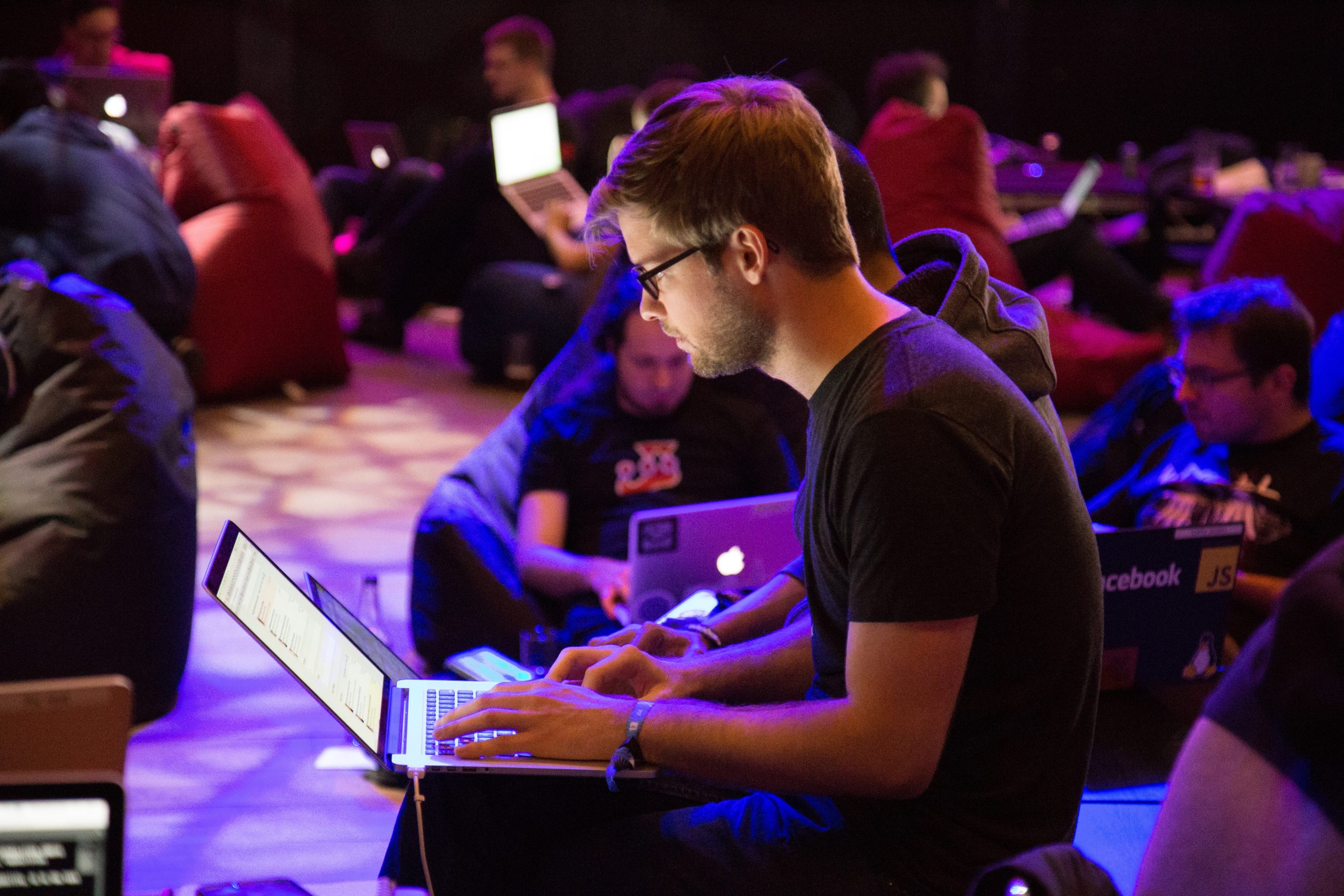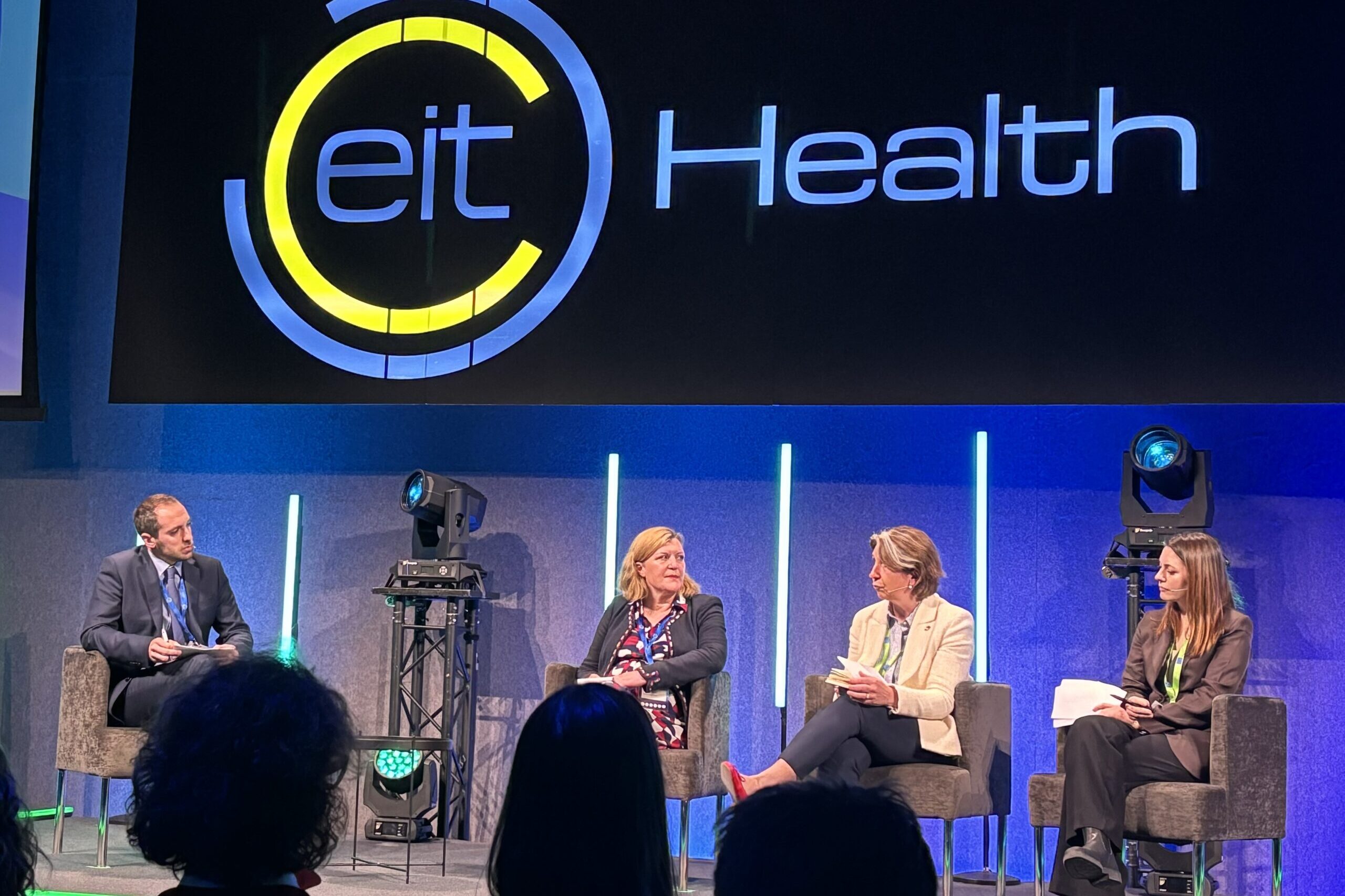15th August 2019
Nine-month EIT Health Campus programme culminates with competitive presentations

EIT Health Campus’s SensUs project takes an innovative approach to promote healthcare innovation, with training that culminates in a competition where students from universities around the world demonstrate new ideas for sensing important biomarkers. In this interview, the students who make up the SensUs media team discuss the goals of the 7-8 September 2018 competition: measuring antibiotics for better healthcare.
As in past years, SensUs 2018 sets the focus for the contest by asking students to develop sensors to detect a specific biomarker. This year’s challenge is to help strengthen the medical arsenal against antimicrobial resistance by developing sensors that improve the use of vancomycin, one of the last-resort antibiotics.
Vancomycin has proven effective in killing stubbornly drug-resistant bacteria, but to avoid serious side effects, it is essential to provide the appropriate dosage – a difficult task as the dose needed is different for each patient and can change over time. SensUs 2018 takes up the challenge of creating portable sensors that can measure a patient’s need for vancomycin and suggest precise dosages.
After nine months of study at their universities and online, 13 student teams – from Europe, China, Egypt the United States and Canada – will meet 7-8 September 2018 to present their ideas in a competition. Hosted by Eindhoven University in the Netherlands, the competition will be livestreamed online, allowing a worldwide audience to watch and vote for their favorite teams. Aside from a chance at winning prizes, the students will get to meet with healthcare professionals and industry representatives, so that their ideas can be taken up for further development.
In this interview, the student Media Team involved in the SensUs competition addressed several questions about SensUs and this year’s challenge.
Q: What is unique about the SensUs approach to learning? How is the approach innovative and how does it help to drive innovation?
A: SensUs challenges students worldwide to compete in a friendly-competitive manner in the field of sensors for health. The students work in multidisciplinary teams over a period of nine months, take initiatives and develop novel ideas. They are trained to tackle problems and focus on the design, building and testing of new prototypes.
The students get feedback from the SensUs Organization, they get consultancy offers from companies, and they receive online entrepreneurship training to develop business models. The competition culminates in the SensUs innovation week, where the student teams present their results to university representatives, companies, medical professionals, patients, and to the general public.
All in all, the SensUs competition generates innovative ideas as well as connections between different stakeholders in this health-tech field.
Q: Why was the topic of developing sensors to enhance the efficacy of an antimicrobial chosen for this year’s SensUs challenge?
A: Biosensors can help to cope with the problem of anti-microbial resistance (AMR). Antimicrobial drugs are very important and are widely used in society. Unfortunately, the massive use of the drugs causes AMR, which has become a serious global threat.
Due to AMR, pathogens become less and less susceptible to antimicrobial drugs, and therefore the dosing of the drugs becomes more and more critical. To treat infected patients, they should be provided with a dose that leads to the right level (concentration) of the drug in the body. The level should be high enough to kill the pathogens, but not too high to cause toxic effects in the patient.
The problem is that standard doses are usually not the right doses, because every patient is different. In practice, many patients are either underdosed or overdosed. Thus, it is very important to measure the concentration of the drug in the blood and adapt the dose, in order to achieve the right drug level in the body of the patient. That’s where biosensors will make a difference, because with a biosensor the doctor can rapidly and on the spot measure the drug level and ensure that the patient gets the right dose, making antimicrobial treatments maximally effective, safe and efficient.
Q: The current SensUs challenge is particularly geared toward vancomycin. Can you think of ways in which efforts to solve this challenge could be applied toward developing biosensors for monitoring other antimicrobials – or possibly for developing biosensors for other uses?
A: The teams are developing new biosensors for the detection of vancomycin, which is an important antibiotic drug, but the sensors will also be applicable to other antimicrobial drugs and other uses.
Biosensors typically make use of a detection principle and a molecular recognition element (e.g. a specifically binding protein, such as an antibody). The same detection technique can be applied to measuring another antibiotic when the molecular recognition element is replaced (e.g. when a different antibody is used). So, a detection principle can generally be used for measuring more than one substance.
Q: It seems unlikely that anyone will solve the whole challenge of developing a portable vancomycin sensor in nine months. What sort of advances can be expected during the course? Do you think some of the students’ ideas might eventually be developed into commercially viable products?
A: In the previous two editions of SensUs we were surprised by the results of the teams. In the first year, four of the five teams had a working biosensor at the contest for the detection of creatinine in blood plasma. Last year, nine of the ten teams had developed a working device for the detection of NT-proBNP in blood plasma.
The devices are compact systems in which early-stage ideas are implemented. Examples of ideas that were demonstrated are a method to actuate fluid in a biosensing cartridge, a method to use nanoparticles for optical detection, and a new type of sensing surface for electrical detection.
These advances feed new projects within the universities and collaborations with companies. Certain concepts might eventually be developed into commercial products, but that typically takes several years and additional skills. That’s why we have introduced an entrepreneurship training in SensUs 2018. The students learn how to analyse the market potential and develop a business model for their biosensor. Furthermore, during the contest week we organise a session on “How to create a start-up company in the field of biosensing” in order to inspire people and exchange experiences on the initiation of start-up companies.
Q: Your wiki page notes that, not long after Eli Lilly called for a search for new antibiotics, vancomycin was discovered in the soil in Borneo in 1952. Are we simply continuing the race against bacteria that penicillin inventor Alexander Fleming advocated in 1945? Has antimicrobial resistance become a more difficult challenge today than it once was? Why or why not?
A: Antimicrobial resistance is indeed a more difficult challenge than before. The most effective antibiotics that we use nowadays were discovered over 40 years ago. The known drugs are massively used in society and the pipeline of novel antibiotics is very thin. Especially if bacteria become resistant to last-resort antibiotics, like vancomycin, then there are no alternatives. This makes the challenge to find solutions for antimicrobial resistance even more urgent.
Q: Do you think researchers, working in combination with other professionals, can solve the threat of antimicrobial resistance? Who’s winning now, humanity or microbes?
A: Great efforts are being taken to address the AMR problem. The AMR Industry Alliance has adopted the following definition for appropriate use of antimicrobials: “The right patient receiving the right drug at the right dose in the right formulation at the right time for the right duration for the right pathogen and site of infection.” The challenge of SensUs 2018 links to the aspects “the right drug at the right dose at the right time for the right duration”. We are optimistic and think that technological innovations can have serious impact in this field.
Q: Do you feel that antimicrobial resistance is a challenge that is particularly suited to solutions from innovative entrepreneurs with new ideas?
A: Yes indeed. AMR is a large and growing societal problem with many stakeholders. There are many opportunities for innovative ideas. For every idea, it is important to view the bigger picture and develop a strategy as to how the innovation can be implemented in society.
Because AMR is a growing societal problem, the need for new solutions is a key driver for innovators and represents a potentially fruitful market.
Q: Do you feel that the need to solve antimicrobal resistance creates a potentially fruitful market for innovators?
A: Yes, the need is a key driver for innovations.
Q: Is there anything else you would like to add?
A: The theme of SensUs 2018 is “Measuring antibiotics for better healthcare”. On 7 and 8 September, the 13 participating student teams will come to Eindhoven to demonstrate their newly developed biosensors as well as their business models. The contest will be livestreamed on our online platform SensUs Digital. People from all over the world can find live results and vote online for their favorite teams. Please watch and cast your vote on 7 or 8 September!
MOWOOT secures over €2M from Next Generation funds

Learn how EIT Health accelerated their journey.
Join the heartbeat of healthtech in Munich this June

Discover the third annual health.tech conference.
Health experts make recommendations on EHDS implementation

Discover our new Think Tank report.